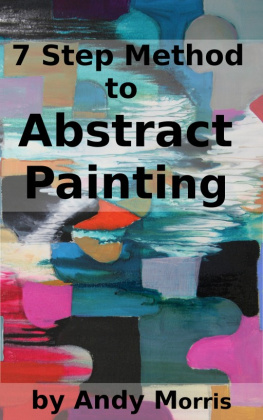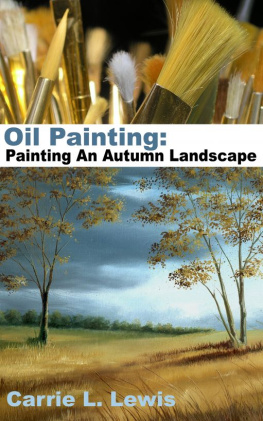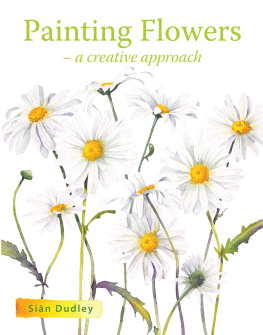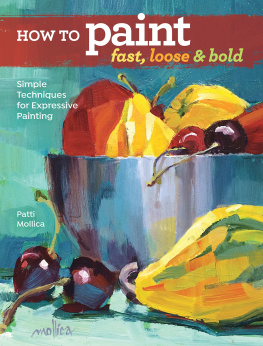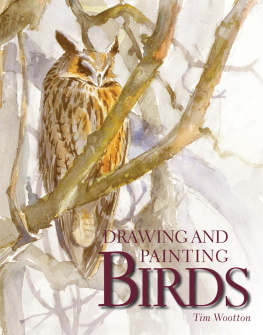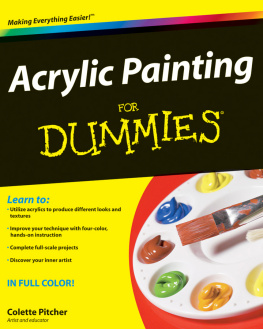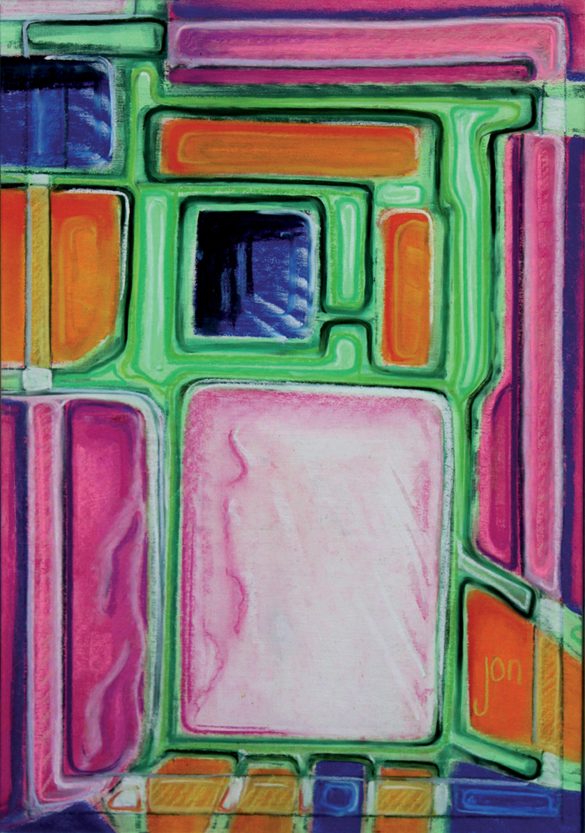
Spangles
PAINTING AND
UNDERSTANDING
ABSTRACT ART
JOHN LOWRY

First published in 2010 by
The Crowood Press Ltd
Ramsbury, Marlborough
Wiltshire SN8 2HR
www.crowood.com
This e-book first published in 2013
John Lowry 2010
All rights reserved. No part of this publication may be reproduced or transmitted in any form or by any means, electronic or mechanical, including photocopy, recording, or any information storage and retrieval system, without permission in writing from the publishers.
British Library Cataloguing-in-Publication Data
A catalogue record for this book is available from the British Library.
ISBN 978 1 84797 731 1
Acknowledgements
This book would not have come about without the help of my brother, Duncan. Images are crucial to the understanding of the messages within the book and he has been involved in the presentation of all of them. Of particular importance are his presentations of my ideas within the colour section, which have impressed me greatly.
I must also acknowledge the input of the Rev. Dr Nicholas Buxton, who, under the last-minute pressure of the publishers deadlines, offered an overview that helped to tighten up presentation any flaws are mine.
All paintings, illustrations and sketches in this book are by the author.
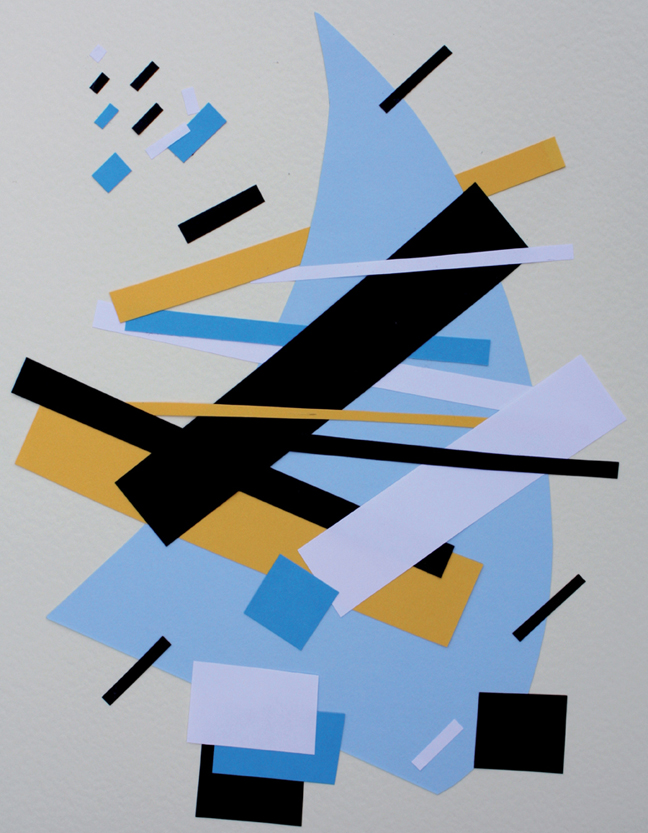
A collage in the style of Kazimir Malevich.
PREFACE
This is a book for thinking painters, whether new to art or experienced professionals. It is essentially a practical painting book but since abstract painting is as much a thinking process as it is a doing process, effort is made to help our understanding and our ability to analyse what we are doing, why we are doing it and what to do next. Until pennies drop it is always difficult to move to the next stage of understanding. By using practical exercises along with the explanatory text it is hoped that the thinking and the doing processes can develop in tandem.
This is not just a book about painting abstracts; it is a book about understanding painting and about understanding art in general.
Perhaps the most difficult stage in painting abstracts is getting started. We have all seen abstract paintings, but if asked to paint an abstract, we usually have no idea how to begin. The approach here is to move progressively from our comfort zone of figurative painting (where the subject is still clear) toward abstraction, but in mentally acceptable stages. Most of the images discussed in this book do not reach complete abstraction, but hover somewhere between the realistic and abstract extremes. I do not argue here that there is any merit in an artist making all his images completely abstract as there is a lot of satisfaction to be found in working in the middle ground.
A simple change in mindset is needed to start the journey into abstraction. A move away from the need to copy and toward the understanding that the artist is in charge of what he paints is fundamental to this approach. Try to believe that what is in front of you is only the starting point. Items can be moved and colours and shapes changed. Negative shapes can be made more important than whatever it is that encloses them. Straight lines can be changed to curves. A calm spring sunny day can become a dull, windy autumn day. A sunny scene can be turned into a moonlit one. The dull can be made bright. Backgrounds can be changed to harmonize with the main subject.
This book will identify the tools that are available to help, and we will apply them in simple combinations, experimenting to find pleasing end results.
Persistence is also an important factor in the early stages of mindset changing: dont give up too easily. No one promises that moving into abstraction will be easy, but most find the switch in approach to be enlightening and stimulating.
Realistic paintings and abstract paintings are not opposites, nor are they in any conflict or competition. In fact, artistic rules such as composition, visual harmony, balance of shapes and colour, and the use of form and texture, are common to both. There is a seamless sweep between the two.
The first five chapters of this book are aimed at improving our understanding of what art, and particularly abstract art, is about. By the final chapter we will be in a position to examine the lives and times of certain artists who were involved in the stage-by-stage evolution from realism to abstraction and to try to analyse the mental processes of the time so that we can add these lessons to our own painting practice.
The author accepts that a great number of important contributors to the evolution of abstract art are not acknowledged in this book. This is either due to the limits on the scope of the book, which was never intended to be exhaustive, or to the limits of the knowledge and research of the author.
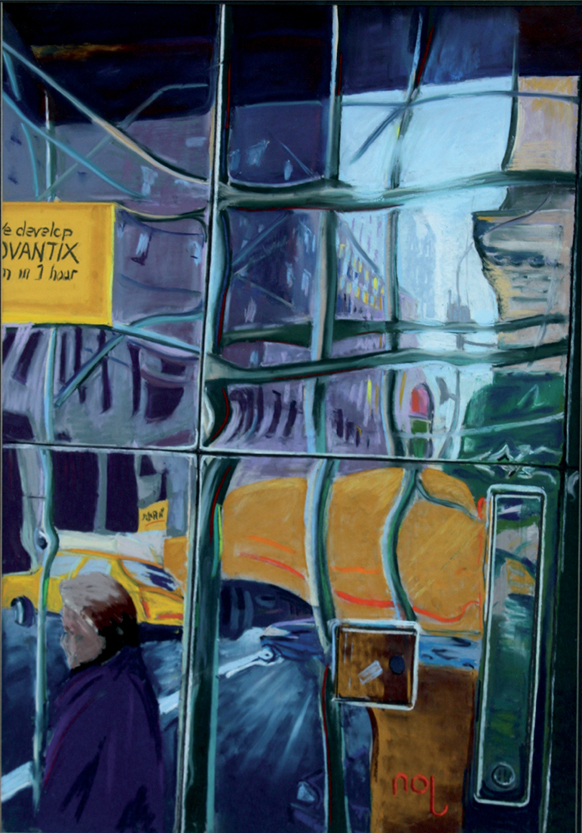
An abstract-like painting showing reflections in stainless steel cladding on a New York building.
CHAPTER 1
AN INTRODUCTION TO ABSTRACT PAINTING
Abstraction is the opposite of copying. It is the use of the imagination to produce an image. It is not the opposite of figurative or representative painting, as the source of the subject of the painting can often be recognized without it being truly realistic.
Abstraction is a mental process involving either depicting what is in front of us, but in our own way, or realizing images directly from the imagination.
Often it is easiest to start with something realistic and to take it on a journey of simplification or exaggeration, and we can stop when the source can still be recognized or we can move on into complete abstraction where the source is unrecognizable. There are other approaches, but this one serves to aid initial understanding.
THE STAGES OF ABSTRACTION
1. Realistic
Realistic painting involves the creation of an image made to represent the subject as closely as possible to the way most of us see it. One could claim it to be almost photographic art, although perfectionists will point out that photography suffers from chemical and optical limitations and aberrations that prevent photographs from being truly representational. Realism was the norm for Western art certainly from the Renaissance period until the mid-to-late1800s, although art had never stopped evolving before this period or indeed after.
2. Abstract-like
Think of the visual puzzles we were given as children where we had to work out what something was, having been drawn or photographed from an unusual angle (a cork-screw taken from the pointed end, for example). Or think of the images offered here of a New York street distorted by reflections in stainless steel wall cladding and of a close-up of ice cubes in a whisky glass. Both look unrealistic and could be categorized as abstract but in fact are very representational. This typifies the abstract-like category.
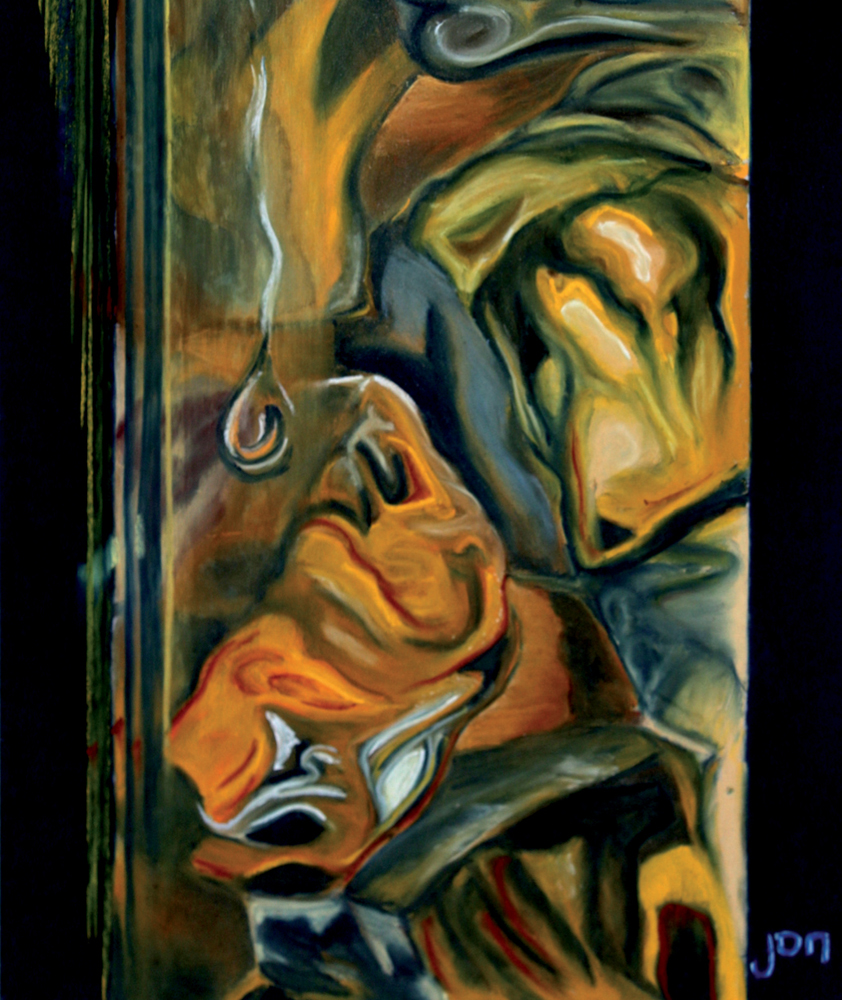
A painting of ice cubes in a whisky glass.
Already we are realizing that realism versus abstraction pigeon-holing is not clear-cut.
Next page



